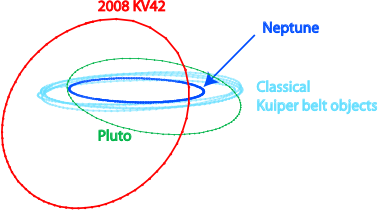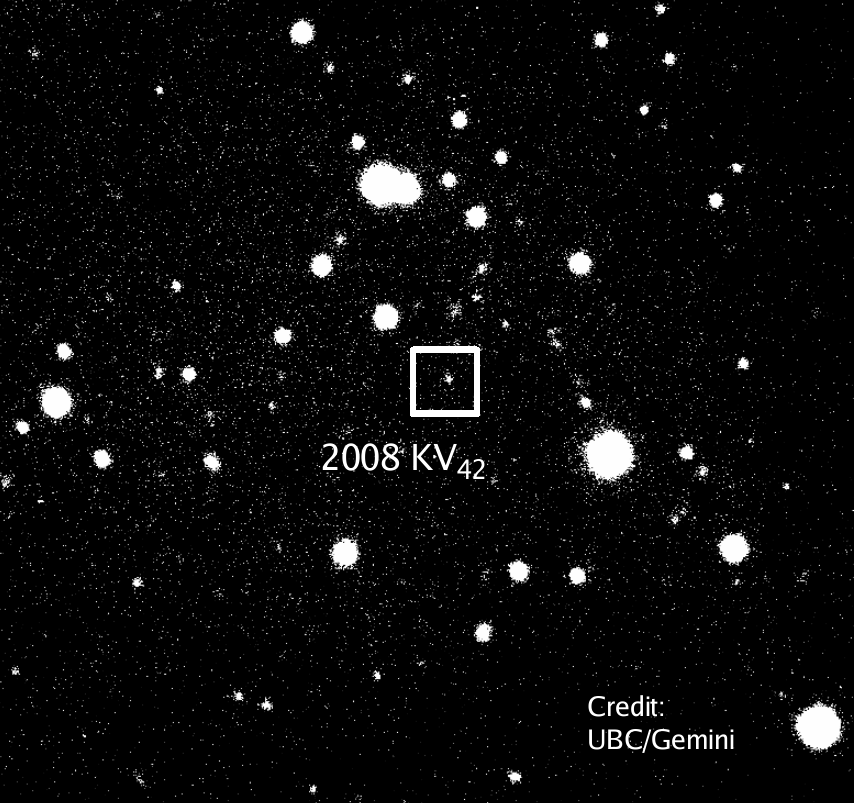When scientific terms become part of the cultural fabric they often lose their meaning. Biology has had its share of modern misunderstandings with 'evolution' becoming colloquial rather than scientific, along with the general term 'theory', which today is used by anyone with a crackpot notion about particle physics, math or the end of the world due to a tunnel in Switzerland.
So it goes. That's why today we have advertising claims like 'the next evolution in cars' and then press releases about the 'missing link' in comets.
Hey, we don't shape the culture, we just try to cut through it. So this time we will talk about the 'missing link' between an Oort cloud and Halley's comet and discuss the 'evolution' of these mysterious space bodies, which will make biologists here irritated. Later on we can use terms like 'genesis' and 'creation' in their place so religious folks can feel slighted also.
Why mention all that? Well, we run out of science terms to use when there is no previous explanation for an object, so we have to fall back on cultural ones in order to convey why something is important. In this instance, a team of scientists has found an unusual object whose backward and tilted orbit around the Sun is just baffling enough that it may tell us about the origins of some comets.
You heard me. Researchers from the Canada-France Ecliptic Plane Survey project have discovered an object that orbits around the Sun -- backwards. And it is tilted at an angle of 104 degrees, almost perpendicular to the orbits of the planets. Take a look:

I call that 'fascinating.' They just call it 2008 KV42.
2008 KV42 is not just any rock. It also gets called a "trans-Neptunian" object, because its orbital path is greater than Neptune's. It's about 50 kilometers in diameter and 35 times further from than the Sun than our friendly Earth.
Just as an FYI, this trans-Neptune region of the solar system usually gets called the Kuiper Belt, a term you are likely more familiar with than this Trans-Neptunian business - so now you know.
First, some things about comets. The known comets can be divided into three groups, based on the shape of their orbit:
- ‘nearly isotropic’ comets (meaning they are come from all directions). These comets plunge in from the outer Oort cloud from ten-thousand times (or more) the distance from Sun to Earth. They have very large orbits, and cross inside of Jupiter’s orbit.
- ‘Jupiter-Family comets’ which orbit with small tilts. These comets are believed to come from the Kuiper Belt.
- ‘Halley-type comets’ have retrograde and/or highly-inclined orbits, their origin is currently a puzzle. Models trying to produce these from either a Kuiper Belt source or an Oort cloud source have been largely unsuccessful.
"Certain types of comets are not naturally produced after planet formation, especially those with highly tilted orbits," says University of British Columbia astronomer Brett Gladman, who also holds the Canada Research Chair in Planetary Astronomy. "This discovery may finally show how they transition from the Oort Cloud to become objects like Halley's Comet."
Except we don't know anything of the kind from this research, though Gladman says studying these objects can someday give us a peek into the early history of our solar system, so they have been carrying out a targeted search for objects with these highly tilted orbits. It won't matter to Digg readers, 30,000 of whom will run off a cliff over a press release with the term 'missing link' in its title. The initial discovery was made using the Canada-France-Hawaii Telescope in Hawaii, with follow-up observations provided by the MMT telescope in Arizona, the Cerro Tololo Inter-American Observatory (CTIO) four-metre telescope in Chile, and the Gemini South telescope, also in Chile.

The discovery team is currently performing follow-up observations of 2008 KV42 to pin down its orbit with greater precision. They will then begin unravelling the archaeological information trapped in the orbit of this highly exceptional member of the trans-Neptunian population.
Does that mean we will really get answers about the origin of something like Halley's Comet? Unlikely. Heck, we can't even really observe 2008 KV42 but, like anything in science, baby steps lead to big leaps over time.
Computer simulations say 2008 KV42 may be just such a 'transition object' but it will take real discovery of the Oort Cloud to find out. And maybe we'll find a whole lot of "Halley's Comets."
Learn more about the Canada-France Ecliptic Plane Survey project here.




Comments